B.
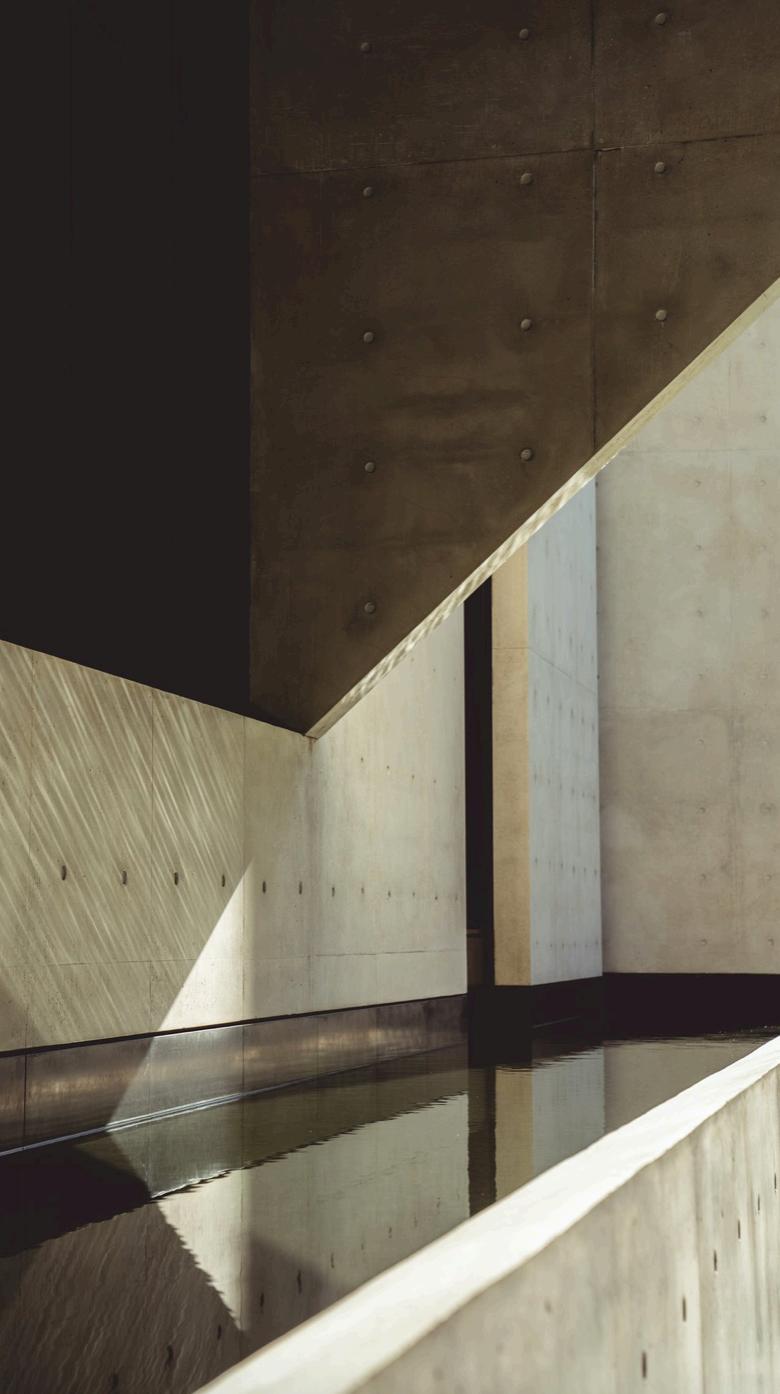
ARCHISOUL ARCHITECTS
A CONVERSATION ON PURPOSEFUL DESIGN
ARTHOUSE GALLERY
A CREATIVE COMMUNITY
CHRIS DALY
A UNIQUE AND CAPTIVATING PERSPECTIVE
ISSUE NO.2
AN INDUSTRY JOURNAL BY BOOM BUILD
Traditionally,thefieldsofarchitectureandconstructionare viewedasdistinctandseparate,witharchitectsenvisioning designsthatconstructionworkersbringtolife
However,thereisanundeniablesenseofcommunitythat existsbetweentheseindustries. Architects,builders, consultantsandvarioustradespeopleworktogetherto createthespacesweinhabitanduseeveryday This collaborationiscrucialforthesuccessofanyproject,andit deservesfurtherexploration
Thisjournalwilldelveintotheintersectionofthe architectureandconstructionindustriesandhowthissense ofcommunitymanifestsandcontributestosuccessful projectsandsatisfiedclients
Wewillfeatureindividualswhowehaverecently collaboratedwith,allwhohaveachievedgreatsuccessin theirrespectivefields.
Ourfocusistohighlightthediversevoiceswithinour communityandtocontributetoagreaterwhole

CONTRIBUTORS
CHRIS DALY KATE SOMMER
WILLIAM TAYLOR
WILLIAM MANSIELD
THOMAS STUDER
TOM FERGUSON
SIMON WHITEBREAD
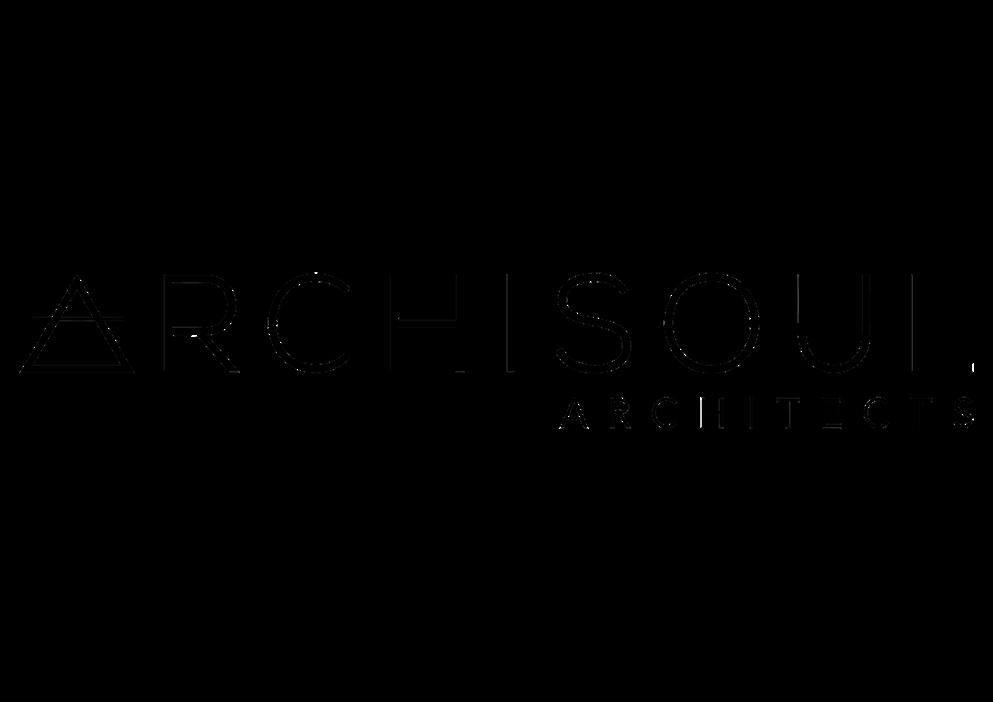


CONTRIBUTORS
LETTER FROM THE DIRECTOR
As a small business owner, it’s quite easy to get bogged down in the challenges that get thrown our way The tasks that consume our day-to-day schedule are not generally the tasks that we wanted to be doing when we first made the decision to go into business Quite often, in the early stages of business, we react to situations, instead of carefully taking the time to respond in appropriate and well-thought-out ways Our busy lives can dictate our behaviours, but it’s a process of learning how to grow and change and ultimately, it’s through these challenging times that we stumble across some of life’s greatest awakenings
This edition of our journal excites me as it dives into unique views people have of the world and the way in which we engage with the nature and surroundings in which we live Reading their stories left me wanting to find more time to pause each day, and experience the beauty surrounding us that can, more often than not, go unnoticed due to our busy lives

You are going to read about bio-morphism, sacred geometry and Vastu principles, from Jo Gillies of Archisoul An incredible human that I hold in high regard, leading a team of talented architects to design sustainable homes, community centres and healing projects that greatly enhance the capabilities of various healing modalities
We speak with Chris Daly, a talented architecture photographer, who allows you to see the emotion of a building through his eyes, which enabled me instantly to look a little deeper and discover the hidden beauty of the surroundings with which we intertwine
And we get an insider’s peek into the incredible contemporary art and culture scene that exists at Arthouse Gallery, where established Australian and First Nations artists showcase their amazing work, which gives us the further ability to witness the wonder around us through the lens of another’s eyes, mind and soul
I’m sure this edition will take you on a journey and leave you more curious about life and the magic that exists all around us
Ben Carty




ACONVERSATION ONPURPOSEFUL DESIGN ARCHISOUL ARCHITECTS
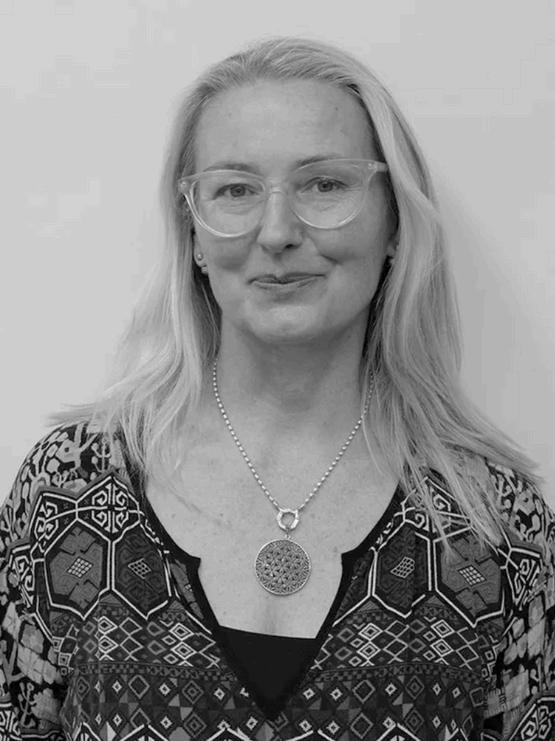
Tell us about what you do and why you do it?
As the founder and director of Archisoul Architects, I work as a registered Architect which includes concept design, design development, documentation, HR, business development, authority liaison (Council, Heritage, State Government), and we do this for new builds, major renovations, Passive Haus, Class 2 and bespoke wellness/ healing centres
The why? Since an early age I was artistic, mathematical and I could easily see things in 3D, so architecture fitted this perfectly The built environment is the ultimate in creative outcomes for me because it starts with a vision for a project knowing how we want it to feel, and support the energy and wellbeing of the owner, yet also work around the many technical complexities, including a budget, authority approvals, and to create a soulful and supportive space that will stand the test of time
Could you briefly touch on your childhood in the Bahamas then the transition from England to Australia? How did these experiences impact your perception of architecture?
My mother was widowed early and took my brother and I to Nassau when I was 3 years old. I took to the blue-water straight away and remember studying the seahorses, how they curl around the plants, and I was intrigued by natures fractals and patterns, and they inspired me for later artwork I also noticed the Bahamian Architecture differences, with some being very colonial and grand (a nod to the UK imperialism), whilst the extreme was almost shanty town concrete blocks and basic tin roofs where our friendly maid lived, and to me it seemed like a conflict of flow and living
When I was 9 years-old we all returned to London to obtain the travel documents for the 10 pound Pom system and we left Southhampton in 1972, arriving in Sydney 2 months later While most kids went to the ships kids club, I met the ship engineer and I’m told I asked countless 3D questions like trying to understand how a pool was supported on an upper deck above an open span! From then on he took me to all places on the ship and further fuelled my inquisitiveness I was regularly called the Nerd, but my true essence was shining through the everyday norms even then
In your experience, how does purposeful design differ from design based solely on function and aesthetics?
They’re all intertwined; however this is such a great question to ask I think of it as ‘Intention’ being a sacred vision, then you add intuition to help with the directional outcome which draws in the aesthetics and interplay of form as a natural consequence The function is the physical brief and this is captured in the above process The sacred intention when fully designed and developed to its final outcome, has the imbued sense of emotional connection to the building. You can tangibly feel it
When you talk about activating a person ' s soul through architecture, are there specific emotions or responses you aim to evoke in your designs?
The activation of the soul is in essence the place we feel most ‘at home’ within ourselves Whether this is a public space building or a private residence Inner calm, grounded and anchored is an aim for a home, but also having fun, joyful and playful spaces where soul integration occurs
A dynamic space in a public/ commercial space should evoke emotions based on its intention i e solid and trusting or perhaps to animate curiosity or uplift the spirit
In our phone discussion you touched on your experience with sacred geometry and how you incorporate it into your design process? How does sacred geometry contribute to creating spaces that resonate with occupants on a deeper level?
Sacred geometry is the maths of the universe It is reflected with nature and our body cells as well as the nature of consciousness By working with harmonics and fractals of numbers, these equal true beauty as each number sequence and shape is is a resonate of this Therefore beautiful spaces are harmonically created which a user always resonates with
On your website you mentioned biomorphic design. How do you approach the integration of natural, organic forms into your architectural projects, and what effects have you observed in terms of the emotional response and connection with such designs?
Bio morphism models artistic design elements and naturally occurring patterns or shapes reminiscent of nature and living organisms People intrinsically feel an emotive response of inspiration, joy, love, amazement, connection, and calm in their own natural state in these spaces Integrating can be difficult around pre-specified boundaries and limited budgets, however the aim is to incorporate elements where possible
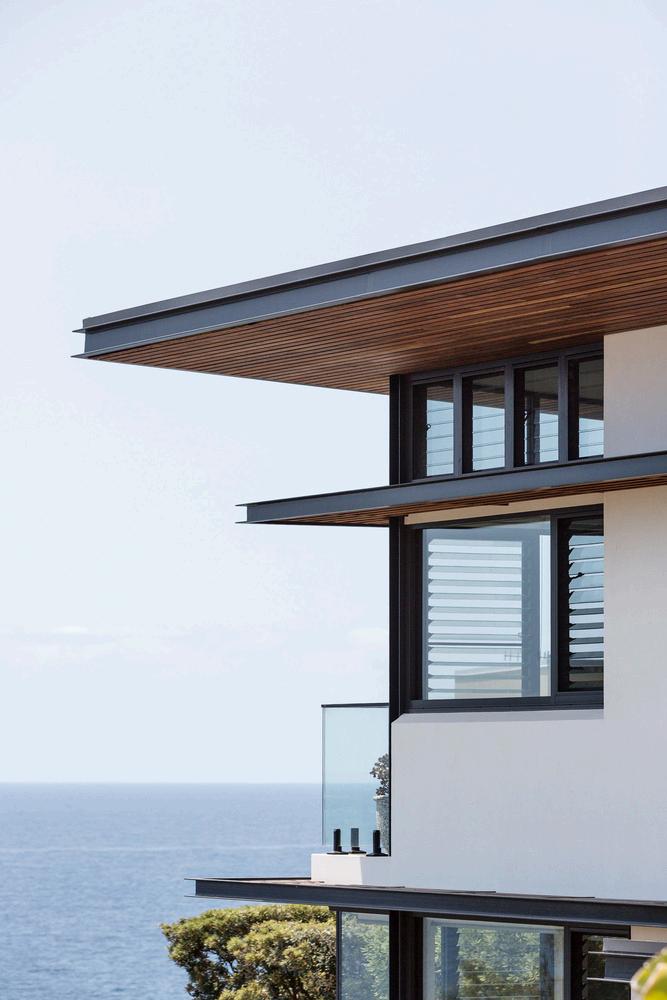


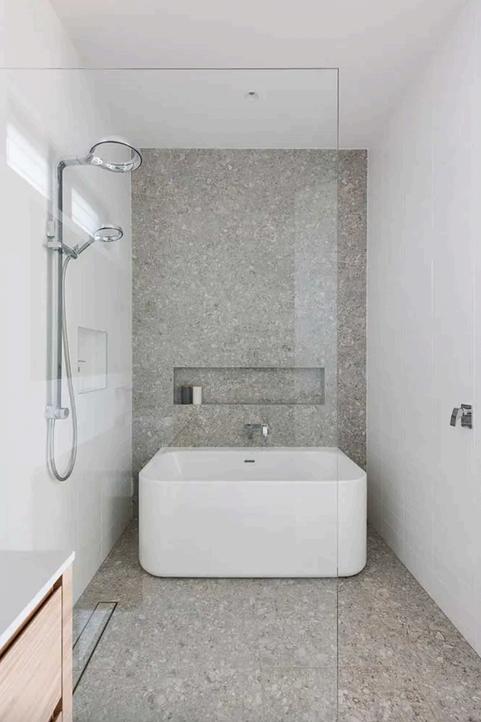
You mentioned expanding your knowledge through an understanding of your own inner landscapes. How does self-awareness and introspection play a role in your approach to architecture, and what techniques or practices do you use to connect with your inner landscapes during the design process?
Our ego ’ s, unfortunate childhood experiences and/or shadow side can easily run the mental show, especially when under pressure or even when given an excess power or money Being self-aware means facing these personality drivers, naming them, re-balancing them and making sure they no longer run the show When we vibrationally connect to our natural state of innocence love and joy, we connect to our inner soul and its direction/ outcomes, and this then permeates through all the decisions and interactions we have with people, nature and spaces. Techniques to quiet the mind like breathwork, meditation, EMT (Emotional Freedom Technique) all help create a stillness. Just go to a park, take off your shoes to ground and take a few deep breaths of the air and marvel at nature, and you start to tangibly feel the difference, and then look for ways to integrate this magic into your life and it’s outputs
This space of calm and inspired intuition is also the first key early in the design process It’s the feminine grace of intuition to allow the masculine thinking to blend together through the design process. It just works, and effortlessly.
I understand that you have a deep appreciation for the Vastu principles of India, which play a significant role in architectural and spatial design How have you incorporated Vastu principles into your architectural projects, and what impact have they had on the functionality, aesthetics, and overall experience of the spaces you ' ve designed?
Vastu can be complex, or more intuitively simple and still powerful as a tool. There are 9 directions of Vastu and 5 elements they incorporate Assessing the shape of the room and pedestrian flow is crucial, as well as being well-lit, ventilated and clean The impact in particular of the 5 elements – Earth (grounded), Air (quality and flow), Fire (warmth and radiant), Water (life and soul) and Cosmic sky (spirit/ soul)
You mentioned an interest in the '369’ Sacred Proportions.' Can you delve a little more into how these geometric principles influence your approach to design?
Nikola Tesla famously stated: “If only you knew the magnificence of 3,6,9 then you would have the key to the universe” These numbers form the building blocks of the universe and have a profound impact on everything from the building energy and frequency to the structure of matter itself In maths terms the concept is reducing any number to a single digit by adding it’s individuals together e g 27 = 9, 3+6 +9, 1+8 = 9 and so on The ratios of the patterns influence the harmonics and proportions of the design outcomes which as a result harmonises our inner sense of positive emotional responses
In your TEDx talk, you discussed the balance between masculine and feminine principles in architecture. How do you think this balance manifests in architecture and design?
It’s easiest just to watch the 15 minute TEDx talk for a deeper understanding, but in a nutshell, the pure masculine is about solidness, problem solving and rationality, whereas the pure feminine is intuitive, flowing and creative Men and women are not strictly one or the other, rather we have a blend and combine both when needed e g think of the tenderness of a dad to their baby, or the strength a woman musters if her kids were confronted by danger
So Architecture can combine both in the form and essence of the outcome e g be more rationale and solid in its masculine 3D spaces and use say concrete extensively and thick sections, but then combine feminine fluidity in boardformed finishes, rounded/ shaped edging on balustrades and soft flowing large height translucent curtains and soft lighting for balance The essence is the flow of the space from functionality and persona to functionality, beauty and inspiration created by combing masculine and feminine.
Lastly tell us what does a typical day in the studio look like for you?
We are a team of eight with equal male to female, youthful and experienced We actively work as a team to share ideas, issues, combine the best of everyone ’ s ideas into each project and of course this gives redundancy on a project if someone is sick or goes on holidays It means we are largely rationale and follow tested processes, but we have lots of moments of fun and joy in the creativity sessions, or it can be a bit chaotic at times around looming big deadlines or just before presentation meetings - enough to keep us all on our toes. I participate in every design concept, direction change, often brainstorm layout options, check-in to make sure we are balancing our emotive approaches too, and attend all client and staff team meetings
There are of course other days dealing with frustrating government bureaucracy, negotiating solutions, learning about new products, scoping fee proposals, new client acquisition, social media interaction, office issues discussed with the office manager, checking invoices, and of course taking some time out to walk the office dogs and ground in nature at the local park, to keep in-balance myself.

CHRIS DALY
A UNIQUE AND CAPTIVATING PERSPECTIVE
Meet Chris Daly, an exceptional architectural photographer whose distinctive style seamlessly merges elements of minimalism and abstraction With a keen eye for unique shapes and a passion for clean, minimalist aesthetics, Chris captures architecture in its purest form His approach to photography not only exhibits structures but also weaves a narrative that transcends the physical, making his work both visually captivating and emotionally resonant.
How would you describe your style as an architectural photographer, and what draws you to this particular aesthetic?
As an architectural photographer my style tends to blend between the moulds of minimalism and abstract I’m drawn to unique shapes and a clean minimalist aesthetic, often combining the two to capture what I find to be interesting frames What attracts me to this particular aesthetic is the satisfaction of capturing architecture in its simplest form For me, it is a constant exploration of interplay between light and shadow, contrasting textures and the narrative the building holds within the environment it stands
When you approach a new architectural project, what elements or features do you prioritise capturing, and why?
Approaching a new architectural project there are certain key elements I prioritise when shooting These are broken down into four main components which help me efficiently capture the project The first, is the key architectural features that define the project These features capture the creativity and vision of the architect and provide the project with a sense of character Next, if I am shooting interiors, I will capture the key rooms and the spatial flow of the building Linking rooms with transitional spaces helps convey the functionality of the design, where I’ll often use angles to highlight interesting perspectives within the building. The interaction between light and shadow is something that fascinates me as a photographer and will always be something I showcase in a buildings design The way in which a buildings design responds to light depending on the time of day is always interesting and highlights the creative approach architects use to utilise light in spaces The last component is the overall composition and context in relation to the environment around it Whether this is conveying a building setting amongst a natural landscape or the relationship it shares with the other buildings surrounding it
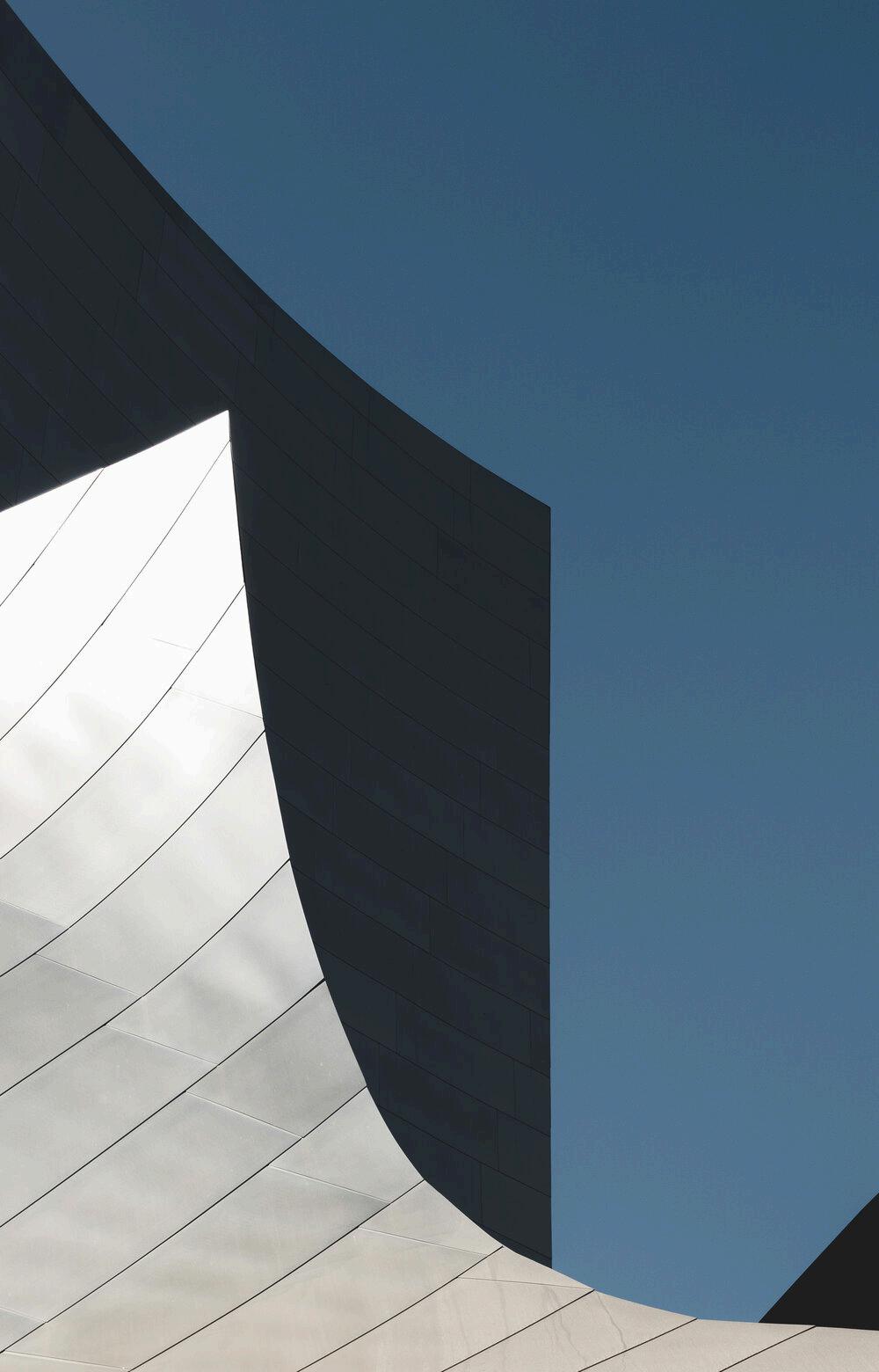

Can you share a specific challenge you ' ve encountered during an architectural photoshoot and how you creatively addressed it?
Unexpected weather conditions can always throw a curveball at you when trying to photograph on location All we can do is concentrate on creative work arounds to still achieve the desired project outcome Shooting at a coastal house where the beautiful beach landscape plays a main part of the character of the house, was unfortunately washed out in dark grey and rainy conditions A large percentage of the house is concrete, with bespoke dark beams lining the inside The darker, grey colours of the house worked well with the outside environment. Focusing on the materials and textures that suited the gloomy conditions created powerful images It’s always a heart sinking moment when the conditions are not how you wanted them to be But when you stop and take a breath, there are always ways to work around it
Among the projects you ' ve photographed, is there one that stands out as a personal favourite? What makes it special to you?
Over the years I’ve photographed quite a few interesting buildings, however one earlier this year still resonates with me to this day. Quite often whilst driving past the rear of the building my eyes were instantly drawn to one particular aspect that I found intriguing. This building being the newly completed North Building at The Art Gallery of New South Wales When the time came to capture the building, I was met with all my ideal components I look for when composing an architectural photograph Distinct oblique lines paired nicely with a layered contrast of shadow with a glimpse of the glass paned handrail providing a separation between the two buildings’ tiled façade I think this particular project resonates with me as the gallery stands as a significant cultural institution With the addition of the contemporary structure next to the historic building, it evokes the idea of the old and the new coming together
Architecture can evoke emotions. How do you strive to capture and convey these emotions in your photographs?
Architecture can most certainly evoke emotions and as a photographer I strive to go beyond the means of capturing the sheer physical structure I see before me, rather, compose an image that conveys the emotions embedded within the design The way in which you capture light interacting with a building or space is a key way to instil a sense of emotion for the viewer Similarly, composition aids in this approach My fixation on lines, angles and the spatial relationship of objects within a frame guide the viewers eyes and help create a visual narrative.

Are their specific architectural elements or details that you find particularly fascinating or enjoy capturing in your work?
As an architectural photographer, I am particularly drawn to certain elements and details I find visually compelling, which contribute to the overall aesthetic of the structure but moreover offer a unique opportunity for creative expression As I have mentioned previously, the interaction of light and shadow is something that fascinates me deeply The way in which contrast is formed and the relationship sunlight can have on various materials and how it can highlight textures can create engaging imagery In addition to this, I am fascinated with geometry and the way in which lines can guide your gaze in an image. I enjoy incorporating these elements into my work as the interplay between straight lines, curves and angles contribute to the visual rhythm of a structure as I believe these techniques provide an aesthetically pleasing image
Your architectural photography showcases a unique and captivating perspective. Are your works available for purchase as prints, and if so, could you provide information on how interested individuals can acquire them?
My works will be available to purchase in the near future. It is something I am looking to establish early in the new year. If anyone is interested in a print, they can follow me on Instagram @chrisdaly raw as I will update everyone once I have a print store in place
As an architectural photographer, are there particular individuals or artists in the industry whose work you admire or who have influenced your own approach and style? If so, could you share a bit about them and what you find inspiring in their work?
I think through the prevalence of social media it’s become a great tool to discover other artists and photographers and it is super inspiring to see other people’s work. Early on, Australian photographer George Byrne was an influential creative as I admired his almost effortless colourful compositions of urban environments The way in which colour and shadow intertwined creating engaging photos was something I wanted to incorporate into my work Next is German photographer Marc Fischer who creates these amazing colourful, artistic architectural images which evokes a very visceral feeling for me when viewing them He is a photographer with a wicked eye that incorporates geometry into his work creating some interesting compositions The last photographer I’d like to mention is Rory Gardiner His ability to capture engaging images in a variety of spaces is really inspiring His scope of work is so varied that its motivating to feel like you don’t have to be locked into one particularly sub-style of architecture photography

ACREATIVE COMMUNITY ARTHOUSE GALLERY

“Established by Directors Ali and Diana Yeldham in 1994, Arthouse Gallery represents emerging and established Australian and First Nations artists working at the forefront of contemporary art and culture
Arthouse Gallery offers a dynamic and evolving exhibition program throughout the year that promotes the wider understanding and enjoyment of Australian and First Nations contemporary art Over the last 29 years the Gallery has been a regular exhibitor at Sydney Contemporary, Melbourne Art Fair, the Australian Works on Paper Fair, Art Sydney and has held satellite exhibitions in Melbourne, Perth, Western Australia, Indonesia, Singapore and Hong Kong The Gallery has a strong base of collectors and supporters both within Australia and overseas, with a considerable collector base within Asia ”
How does Arthouse Gallery engage with collectors and supporters, both locally and internationally, and what initiatives contribute to building a strong collector base?
Arthouse Gallery has a strong and dynamic events program that encourages the community, art collectors and supporters to engage with the gallery and artists In addition to hosting exhibitions, the gallery programme comprises lectures, concerts, readings, workshops, debates, special projects and performances conducted by invited curators, authors, musicians and artists The Gallery aims to be a vibrant platform to create inspiring communication and discussion in the field of contemporary art and contribute to the growth, education and awareness of the visual arts within Australia and the Asia Pacific Region
“HERPHOTOGRAPHS CAPTUREINVISIBLE ENERGY,MYSTIFYING THEMUNDANEAND RENDERINGTHE FAMILIARFOREIGN, PROMPTINGTHE VIEWERTOQUESTION CONVENTIONAL ASSOCIATIONSOF COLOURASWESEE THEWORLD–QUITE LITERALLY–INANEW LIGHT.”
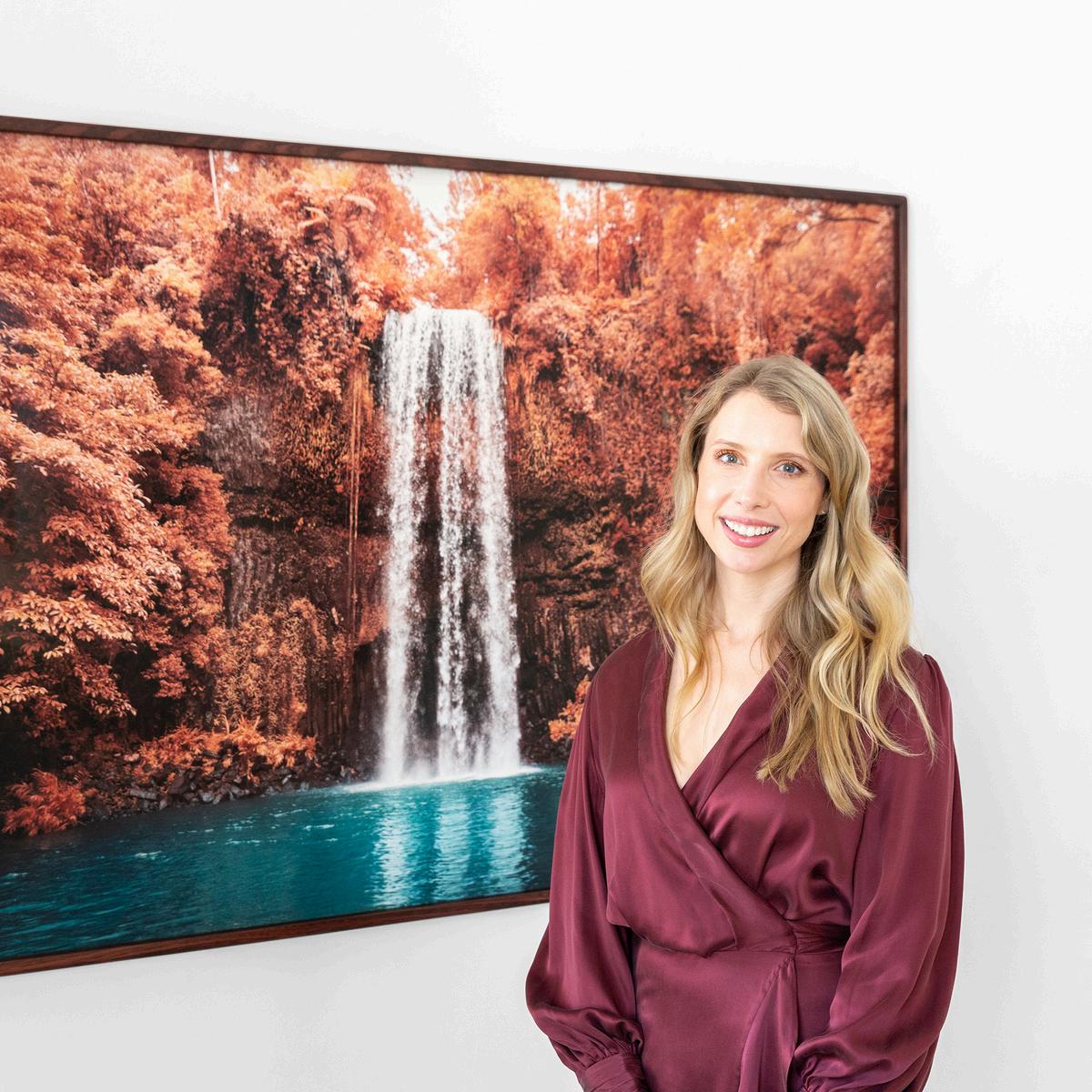
What criteria does Arthouse Gallery use when curating artists and exhibitions?
We represent over thirty artists that include some of the most exciting and innovative practitioners in the national contemporary art scene When we are curating artists and exhibitions we aim to create a dynamic experience in the gallery choosing innovative contemporary artists who create work that engage in interesting dialogues and stories with an aesthetic, visual appeal. We hope that the exhibitions provoke conversation and consideration of the human experience and arts & culture
We are particularly fascinated by the work of Colin Peacock and Kate Ballis. Could you please provide us with an overview of both artists and their recent exhibitions?
Kate Ballis
Kate Ballis is a Melbourne-based fine art photographer creating unique, colour-drenched images using infrared technology She employs photography as a conduit into the unseen, straddling the empirical and the magical. Her photographs capture invisible energy, mystifying the mundane and rendering the familiar foreign, prompting the viewer to question conventional associations of colour as we see the world – quite literally – in a new light Ballis’ most recent exhibition ‘Before Time’ explored the rainforests of far north Queensland Through Ballis’ transformative process rich siennas and burnt umbers coated the landscape removing them from everyday reality Highlighting the history of place and time, ‘Before Time’ evoked a sense of what was residing the beneath the surface of what we see, encouraging contemplation of the environment and the importance of these landscapes


Colin Pennock
In all their vastness and intimacy, the spirited landscapes of Colin Pennock visualise the profound valency of memory. Responding to his immediate surrounds in the Noosa Hinterland as well as remembered moments from his Irish homeland, the artist creates visceral compositions that materialise the experiential and emotional undulations of life Stratified swoops of oil cast a space where formlessness meets the pictorial; where the haze of the past diffuses into the crisp clarity of the present The works canvas that ubiquitous nexus between geographical and emotional landscapes, looking at how we often set out in search of something only to diverge down a new road Pennock’s exhibition in October 2023, ‘Space to Find Peace’ was the first show after Pennock completed a residency in France. His return to his home in the Noosa Hinterland in Queensland, invoked a great love, respect and admiration for the landscape where he lives The works explored the search for inner peace and expressed a deep sense of meditative contemplation and stillness through his abstracted, visceral landscapes Pennock has exhibited nationally and internationally and his work is held in prominent collections including the University of Ulster, the British Consulate in New York and Washington, the Brian Sewell Collection in London and the Hawkesbury Regional Gallery Collection Pennock received a residency at NG Creative Art Residency in France (2022) and has been the winner of the Alan Gamble
Who are some other prominent artists currently represented by Arthouse Gallery, and what makes their work unique and innovative in the contemporary art scene?
Joshua Yeldham
Drawing from a deep observation and a reverential love of nature, Joshua Yeldham’s art practice forms a complex interplay between narrative and myth, imagination and experience Through his highly symbolic visual vernacular, the artist takes us on an inward odyssey exploring the threads that weave cultural ideologies, philosophies and religions across East and West Working across painting, kinetic and musical sculpture, carved works on paper and photography, Yeldham has developed a singular and unique aesthetic that often conflates these various mediums
Often using innovative techniques in his art practice, such as his carved photo media works which he creates using a dremel drill, Yeldham is constantly pushing the boundaries of art and its mediums drawing the attention of curators and collectors around the world He is part of the NGV Triennial 2023 alongside artists such as Tracy Emin, Yoko Ono and Sheila Hicks positioning him as one of the worlds most unique and innovative artists working in the contemporary art scene
Joshua Yeldham has exhibited widely throughout Australia and internationally In 2017 he was awarded the prestigious Nancy Fairfax Artist Residency at Tweed Regional Gallery & Margaret Olley Arts Centre, that culminated in a critically acclaimed survey exhibition
Yeldham has been a finalist in numerous prestigious awards including the Wynne Prize (2019, 2018, 2017, 2014, 2013, 2012, 2011, 2009), Archibald Prize (2013), Sulman Prize (2006, 1998) and Mosman Art Prize (2005, 2003) and in 2015 he participated in the London Art Fair, ART15. Yeldham’s work is held in many important collections including Mosman Art Gallery, Manly Art Gallery and Museum, Australian Stock Exchange, University of Wollongong and BHP Billiton Collection, as well as numerous private collections in Australia and overseas
Jo Bertini
Jo Bertini’s paintings traverse well-worn landscapes in an exploration of the true nature of wilderness Trekking into the most remote and inaccessible regions, Bertini celebrates her long and intimate engagement with the desert. Her work bears witness to natural and human histories of nomadism observing the seasonal rhythm of landscapes and the people connected to them With loose yet refined brushwork, she finds a balance between simple and complex, rescuing beauty from desolate landscapes Her willingness to adventure into the desert, and battle these elements in her work positions her as one of the mo unique artists working today

An award winning painter, educator and writer, she has thirty years of experience as a professional exhibiting artist. Her works are held in the collections of Artbank, National Museum of Australia and the National Portrait Gallery Bertini has been a finalist in numerous art prizes, including the Portia Geach Memorial Award (2022, 2021 2017, 2015, 2014, 2013, 2012, 2009, 2008, 2006, 2005, 2004), Wynne Prize (2015), Tattersalls Art Prize (2019, 201 2014), Calleen Art Award (2014, 2013), Mosman Art Prize (2014, 2013, 2011, 2007, 2006, 2004, 2002, 2001) and Sulman Prize (2011, 2010)
 John Prince Siddon
John Prince Siddon
John Prince Siddon is a Walmajarri man who lives in the remote township of Fitzroy Crossing in the West Kimberley Prince’s psychedelic surrealist paintings bring some of the most urgent themes of our time into piercing view His ironic combination of Australian narratives, current affairs and ancestral creation stories articulate some of the complexities of the present-day Australian experience Prince challenges traditional notions of Indigenous painting, forging a unique path for himself in the contemporary art scene.
Prince challenges traditional notions of Indigenous painting, forging a unique path for himself in the contemporary art scene Combining diverse influences drawn from television, the traditional Kimberley craft of boab nut carving, desert iconography and the epic characters of Narrangkarni (Dreamtime), he creates a ground breaking style of painting and sculpture that is eclectic, gothic and psychedelic His vibrant paintings, 3D printed, painted bull skulls and kangaroo hides explore his Country and history
They engage with issues of national and global significance, from the recent floods, endangered species, destruction of Indigenous landmarks and global warming to the war in Ukraine, gun control and the shortcomings of our politicians
John Prince Siddon has been a finalist in the Telstra National Aboriginal and Torres Strait Islander Art Awards (NATSIAA) at the Museum and Art Gallery Northern Territory (2021, 2020, 2019, 2018) He was also a featured artist at the Tarnanthi 2021 festival at the Art Gallery of South Australia His solo exhibition ‘All Mixed Up’ at the Fremantle Arts Centre, presented in conjunction with the Perth Festival 2020, was heralded as the ‘stand-out exhibition’ of the festival by John McDonald of the Sydney Morning Herald His works are included in the collections of the Art Gallery of Western Australia, Art Gallery of South Australia and Artbank
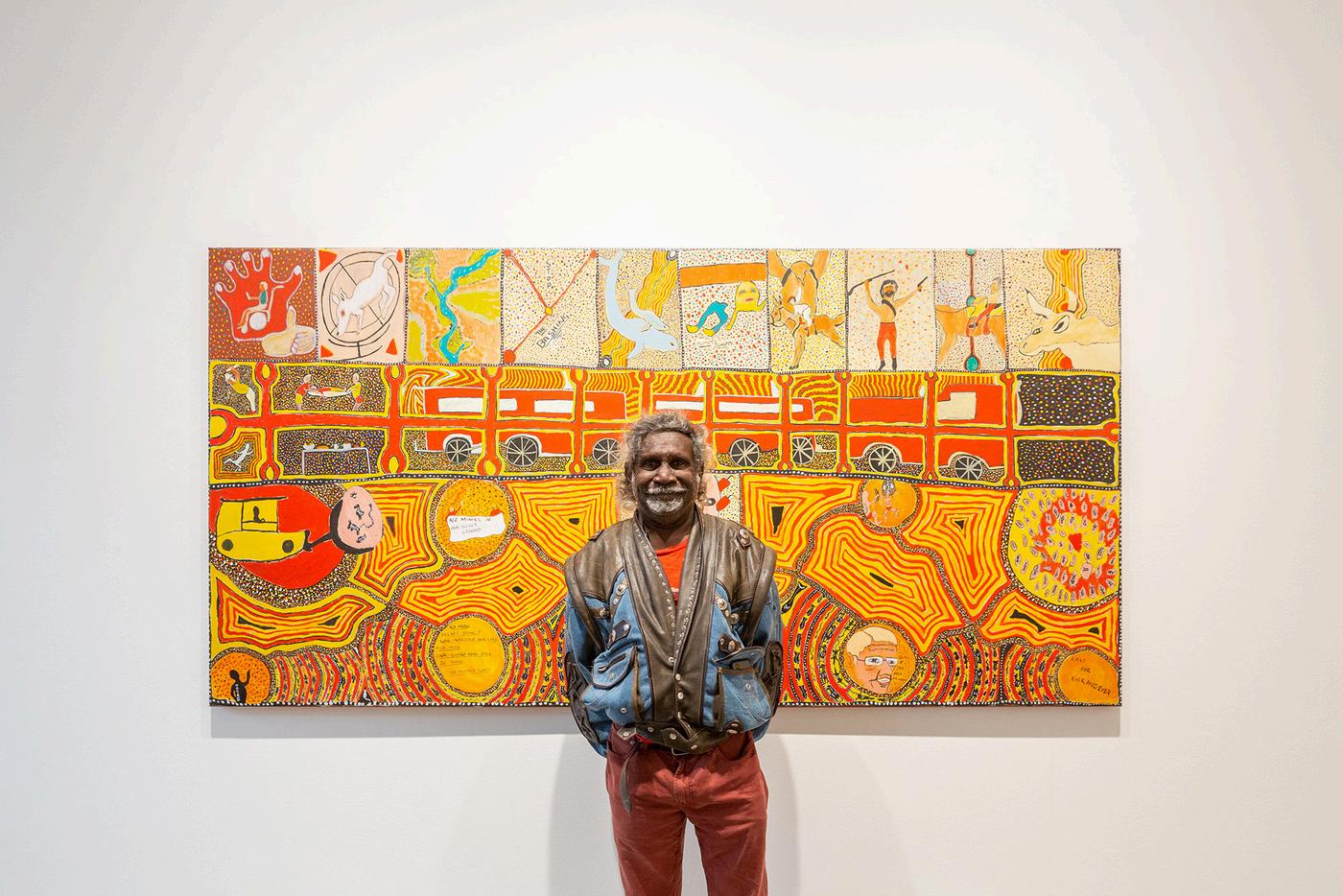





@ B O O M B U I L D B O O M B U I L D . C O M . A U

























 John Prince Siddon
John Prince Siddon










